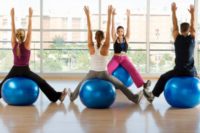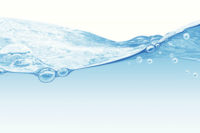
Summer is upon us and after the very long and cold winter experienced nearly everywhere this year, not a day too soon. Summer brings with it the age-old question for many safety directors: do you use plain water or electrolyte beverages for hydration?
Hydration and heat stress are important areas to focus on, not only from an OSHA compliance standpoint, but from a worker compliance and effectiveness standpoint. As OSHA continues to look for new ways to fund and fine, heat stress is an area almost every company is susceptible to being affected by. According to the U.S. Department of Labor website:
“As an example of OSHA’s renewed emphasis on enforcement, we’re establishing a Severe Violator Enforcement Program. This initiative will concentrate our attention and resources on employers who demonstrate indifference to their OSH Act obligations. Any systemic problems that we find with an employer’s safety and health program will trigger additional, mandatory inspections to ensure compliance. With more focus on enforcement and standards, OSHA is hiring. The fiscal 2010 budget calls for more inspectors, whistleblower investigators, and standards developers.”
Keeping a proper heat stress program in place is more important than ever.
Compliance says...
Let’s first focus on OSHA compliance. As stated in the OSHA Technical Manual Section III Chapter four: “Operations involving high air temperatures, radiant heat sources, high humidity, direct physical contact with hot objects, or strenuous physical activities have a high potential for inducing heat stress in employees engaged in such operations.”OSHA recommends the following fluid replacement protocol:
Cool (50°-60°F) water or any cool liquid (except alcoholic beverages) should be made available to workers to encourage them to drink small amounts frequently, e.g., one cup every 20 minutes. Ample supplies of liquids should be placed close to the work area. Although some commercial replacement drinks contain salt, this is not necessary for acclimatized individuals because most people add enough salt to their summer diets.
Although OSHA addresses the sodium contained in commercial replacements as not being necessary, there is no mention of the electrolytes, potassium and magnesium contained in the most popular electrolyte replacement beverages. Clearly OSHA is not giving an endorsement for these products, but is also not discounting them as viable fluid replacement options. According to OSHA, water or electrolyte replacement beverages will do the trick in providing fluid replacement.
Research shows
Yes, it is one thing to make water available, to post a heat stress compliance policy and to coach managers and supervisors on heat stress policy and then there is the reality of workers actually following it.“Our research has shown that workers are more likely to comply with a company’s heat stress policy when name brand electrolyte beverages are being provided, specifically Gatorade®and Sqwincher ®,” said Malik Mantro, marketing director Hydration Depot.
“Workers ask for these products by name and find drinking them enjoyable, as well as compliant. Enjoyment is a big benefit in increasing employee safety compliance,” Mantro continued.
Effectiveness
Just like the studies that have been conducted on providing stylish safety glasses and the increase in voluntary compliance in wearing them, so too, you can surmise what employees like significantly improves voluntary compliance with hydration and heat stress programs.Many safety directors agree that gone are the days of heavy-handed management techniques to gain compliance. Focusing on employees’ likes and dislikes, comfort, motivational programs, convenience and branding all play significant factors in a truly effective safety compliance program.
Available water is certainly adequate for any hydration and heat stress program, but our experience has shown that to truly implement and maintain a viable program, where OSHA compliance and worker compliance come together most effectively, is when electrolyte replacement beverages are provided. Call it the power of advertising perhaps, but we like to think of it as a way to keep your workers happy, healthy and hydrated.





